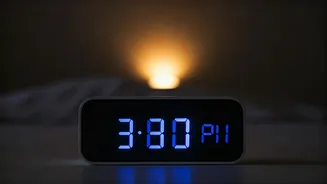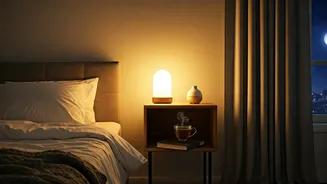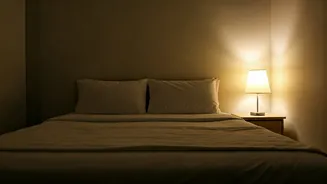Ancient Sleep Patterns
Before the widespread use of electricity, the sleep habits of humans were remarkably different from those prevalent today. Instead of a single, continuous
night of sleep, people commonly engaged in a biphasic sleep pattern. This involved sleeping for a few hours, then waking up for a period, and finally returning to sleep. The initial sleep period, typically occurring shortly after dusk, lasted for approximately four hours. After this first sleep phase, individuals would wake for several hours. During this interval, they would engage in various activities like socializing, praying, or working. After several hours of being awake, they would then return to sleep, completing a second sleep phase of a few more hours before dawn. This type of sleep arrangement was deeply rooted in the natural rhythms of day and night, dictated by the presence or absence of sunlight, where artificial light sources were unavailable.
Why Biphasic Sleep?
The existence of biphasic sleep wasn't merely a cultural quirk; it was, in fact, perfectly sensible and in line with natural human needs. The key to understanding this lies in the absence of artificial lighting. Without electricity, the day's activities ended with the setting of the sun, and the night was consumed by darkness. This created an ideal environment for the body to rest and restore itself. The initial sleep period was the body's natural response to darkness and signaled the beginning of the night’s rest. The waking period, occurring in the middle of the night, provided a crucial opportunity for social interactions and other activities that couldn't be done during the day. This interruption offered time for intimate conversations, communal storytelling, and religious practices. When the second sleep phase began, it acted as a final preparation for the coming day, ensuring people awoke ready for the day's tasks with the rising of the sun. This rhythm of sleep perfectly aligned with the biological clock, optimizing health and wellness.
Shift with Electricity
The advent of electricity fundamentally changed the sleep landscape, making the biphasic pattern largely obsolete. Artificial light extended the day's activities, allowing people to work, socialize, and engage in various pursuits well into the night. This introduced the concept of a single block of continuous sleep, displacing the natural rhythm of two sleep phases. The ability to control light became a significant advantage in the modern era, altering the human relationship with the night. While it brought many benefits, such as extending the productive hours, it also disrupted the established biological cycles that had been effective for millennia. As the world embraced electricity, the older, more natural sleep pattern quickly lost its practical function and cultural significance.
Modern Implications
Even though biphasic sleep is no longer the norm, its study and understanding still have relevance today. It allows a deeper insight into how we interact with sleep and our bodies. The increasing research into sleep has allowed modern medicine to explore how sleep deprivation or irregular sleeping can impact mental and physical health. It also encourages a deeper understanding of the importance of aligning sleeping patterns with natural biological rhythms. This encourages people to assess their own sleep habits, considering factors like light exposure, work schedules, and technology use. Many people are realizing how important it is to prioritize sleep and incorporate practices that mimic or respect the body's natural sleep cycle. As we explore the science behind sleep, it highlights that even small changes can enhance the quality of sleep, supporting overall well-being and productivity.













